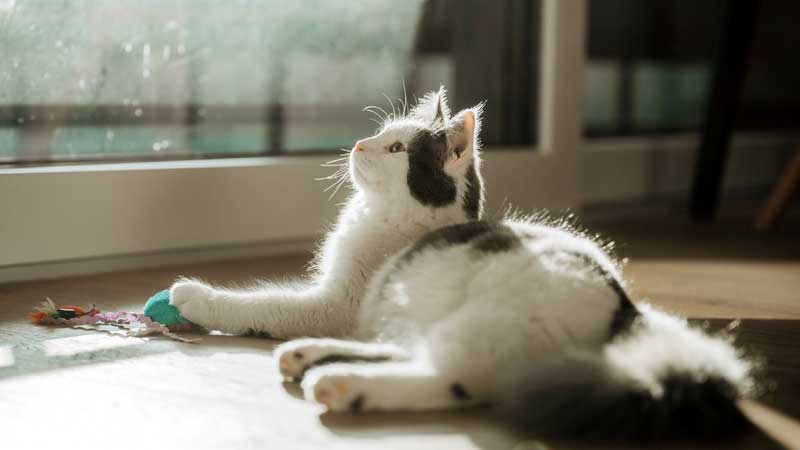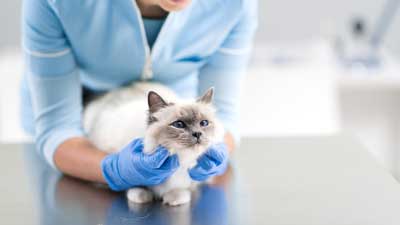How Are Indoor Cats Get Infected?

Do Indoor Cats Get Sick?
The notion that indoor cats do not require vaccination against infections and diseases is entirely false. Severe infectious diseases can be found in indoor cats, even though staying indoors is relatively safer than living outside and extends the life expectancy.
Pets are vulnerable to infection in severe weather, just like people. However, a common concern is how colds pass to indoor cats.
Viral or bacterial infection often brings on chills in individuals. Cats and dogs cannot acquire human viruses since most viruses are species-specific. In other words, if you have the flu, your cat would be fine. Therefore, cat-specific viruses and microbes can be detrimental to the quality of their life.
How Are Indoor Cats Get Infected?
Upper respiratory infections in cats are commonly referred to as "cat colds" or "cat flu" (URI). Herpesviruses or caliciviruses have been cats' primary culprits of colds or upper respiratory infections.
Cats typically contract colds the way people do: by being infected by a virus. An infected cat can transmit the virus to other cats, usually through sneezing or coughing. Due to their frequent contact with other cats, those in shelters and boarding centers are especially susceptible to colds. Outdoor cats can contract colds through mingling with other outdoor cats.
Despite an apparent lack of exposure, even isolated indoor cats can catch colds. This is because cats may take time to get colds after being exposed to a virus. An infection may indeed take months or even years to emerge. Cold-causing viruses may persist in the body by being dormant. Therefore, if your cat has always been indoors and hasn't been around with other cats, during stressful situations or underlying sickness, those viruses can reawaken and give your cat a cold.
If someone touches a sick cat or even steps in an area where a sick stray cat has been, they may unknowingly transfer cold viruses on their hands or shoes back to their homes. Fortunately, it's unlikely that either you or your cat will get the flu from the other.
Most viruses that affect one species won't live in a host of different organisms. The possibility of cats transmitting URIs to people is low. The danger is negligible because these illnesses are infrequent. Sharing toys, food bowls, or litter boxes with a sick cat increases your cat's risk of contracting the disease. The cats most at risk for infection include those unvaccinated, kittens, and those confined in catteries.
Symptoms To Look Out For:
1. One of the first symptoms of a developing cat cold is sneezing. If your cat sneezes more often than usual, there could be an underlying cause such as allergies, irritations, dental problems, nasal congestion, or an object trapped in their nose.
2. If your cat has a nasal discharge that is green or yellow, your cat may have a bacterial infection that requires medications.
3. Look for additional symptoms that can point to a cold if your cat stops acting normally during the day and exhibits extreme fatigue.
4. You should seek veterinary treatment immediately if your cat has a fever, indicating that their cold is more serious.
5. When cats feel ill, they often avoid eating or drinking, which can lead to dehydration.
References
- [1] ^ VCA Animal Hospitals: Feline Upper Respiratory Infection
You May Also Like
 Cat HealthThe Cat's Nose Is Dry, Is It Sick?
Cat HealthThe Cat's Nose Is Dry, Is It Sick? Help & AdviceHow Long Does It Take A Kitten To Adjust To New Home?
Help & AdviceHow Long Does It Take A Kitten To Adjust To New Home? Cat HealthWhat Are The Symptoms Of Gastritis In Cats?
Cat HealthWhat Are The Symptoms Of Gastritis In Cats? Cat HealthHow Long Do Cats With Feline Idiopathic Cystitis Live?
Cat HealthHow Long Do Cats With Feline Idiopathic Cystitis Live? Cat HealthDo Cats Carry The Feline Coronavirus For Life?
Cat HealthDo Cats Carry The Feline Coronavirus For Life? LifestyleHow Old Is A Cat's One-year-old Equivalent To A Human?
LifestyleHow Old Is A Cat's One-year-old Equivalent To A Human?